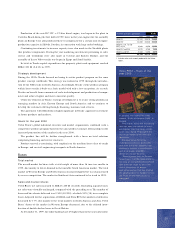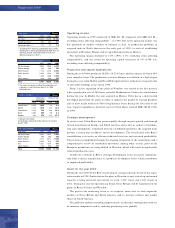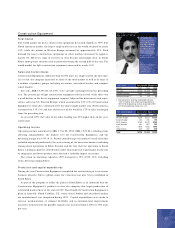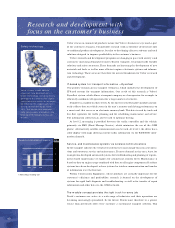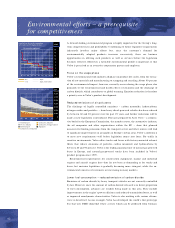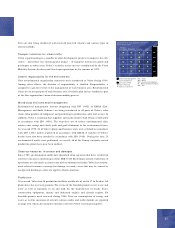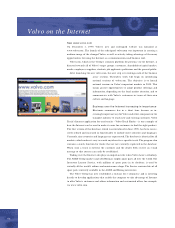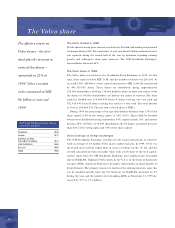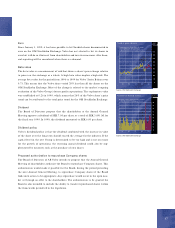Volvo 1999 Annual Report Download - page 42
Download and view the complete annual report
Please find page 42 of the 1999 Volvo annual report below. You can navigate through the pages in the report by either clicking on the pages listed below, or by using the keyword search tool below to find specific information within the annual report.
Research and development with
focus on the customer’s business
40
Volvo’s focus on commercial products means that Volvo’s business is very much a part
of the customer’s business. Considerable research work is therefore devoted not only
to traditional product development, but also to developing effective software and total
solutions designed to improve profitability in the customer’s business.
Volvo’s research and development programs are changing in pace with society’s and
customers’ increasing demands for more efficient transport, environmentally friendly
solutions and safety awareness. These demands are hastening the development of new
materials and fuels, as well as more efficient engines, electronic systems and informa-
tion technology. These areas are therefore the natural foundation for Volvo’s research
and development.
IT-based system for transport information — Dynafleet
One priority research area is transport telematics, which includes the development of
IT-based systems for transport information. One result of this research is Volvo’s
Dynafleet system, which allows a transport company or a bus operator, for example, to
efficiently coordinate all operations for a large number of vehicles.
Dynafleet is available on three levels.At the first level, the Dynafleet module continu-
ously collects data on vehicle status in the unit’s memory and driving performance on
a smart card, that serves as an electronic memory bank. This data is used by truck and
bus fleet operators for traffic planning and for scheduling maintenance and service.
The information collected can also be used to optimize driving.
At level 2, messaging is provided between the traffic controller and the vehicle,
primarily via SMS (Short Message Service), which minimizes the use of the GSM
phone. Alternatively, satellite communication can be used. At level 3, the driver has a
color display with maps showing current traffic information via the RDS/TMC infor-
mation channels.
Service- and m aintenance system s via wireless com m unications
In the transport industry the trend is for customers to increasingly focus on core opera-
tions and outsource service and maintenance. To meet demand in this area, Aero, for
example, has developed automated systems for troubleshooting and planning of require-
ments-based maintenance of engines for commercial aviation fleets. Maintenance is
based on data on engine usage combined with data on all engine components. Database
systems have been developed, as have systems for wireless communication and transfer
of information over the Internet.
Within Construction Equipment, whose products are critically important for the
customer’s efficiency and profitability, research is focused on the development of
systems for rapid fault diagnosis and troubleshooting, as well as for transfer of repair
information and other data via the GSM network.
The m odule concept provides the right truck for every job
Truck’s customers are active in a wide range of industries, and their operations are
becoming increasingly specialized. In the future, Trucks must therefore to a greater
extent than previously offer every customer a customized transport solution. This
Safety technology
Volvo’s heavy trucks contain
im portant new developments in
brake technology, including newly
developed disc brakes that signifi-
cantly increase safety, for example
by reducing the stopping distance
during norm al driving by 10 to
15%. The system also autom ati-
cally senses wear and adjusts the
braking effect equally across all
wheels.
1) Volvo Group, excluding Cars
6
4
2
0
1997 1998 1999
Research and developm ent expenses1) SEKbn



